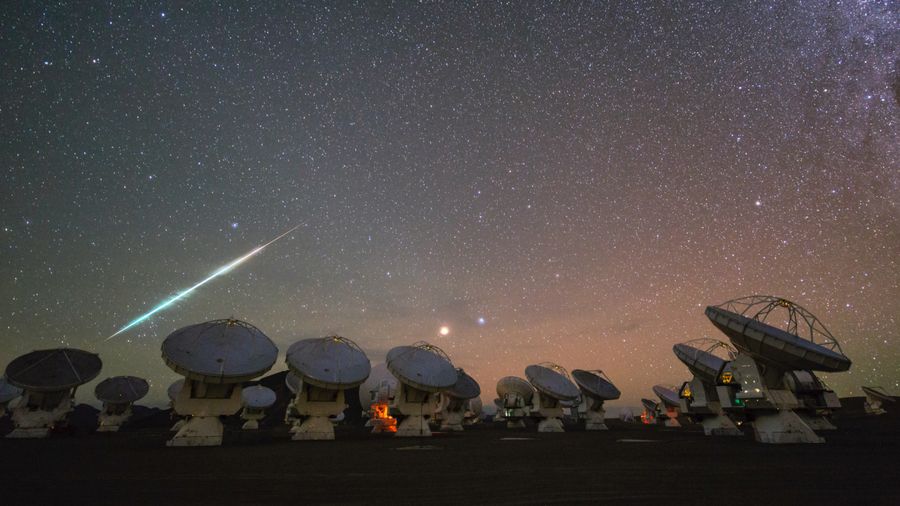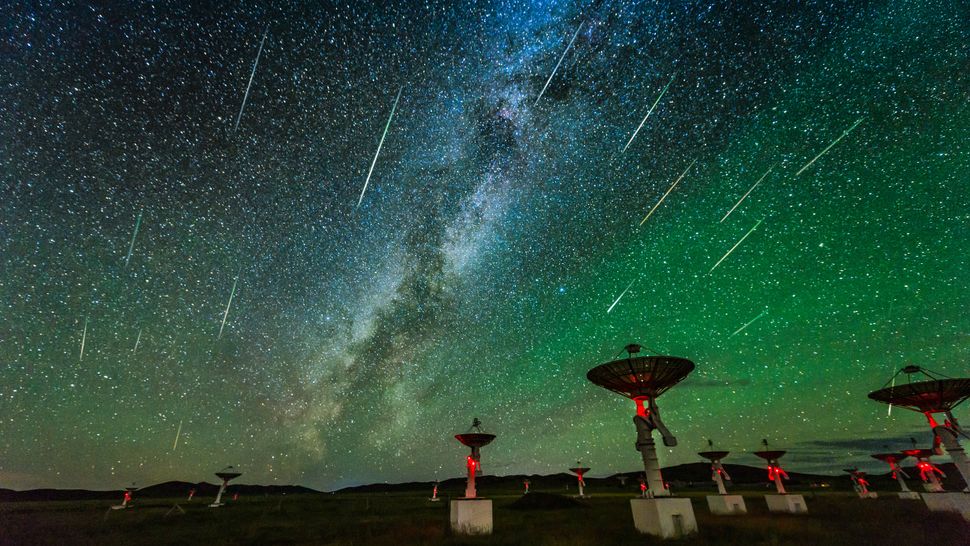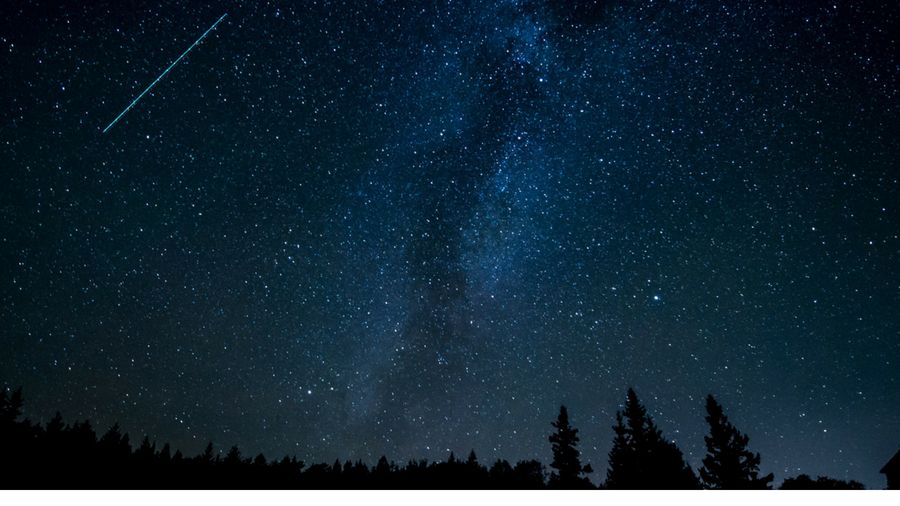Your date tonight with the most interesting astronomical phenomena.. Perseid meteors.. Here's how to photograph them
Arab weather - The Pershawiyat meteor showers began in mid-July, but will reach their peak on August 11-12, when the best meteor showers are expected in 2021, and this year the show will be more clearly visible because the moon will be 13 percent lit. %, and will set shortly after dark, leaving the sky pitch black for the rest of the night. This means that you have great conditions for watching and photographing the meteor shower.
Read more: The Perseid meteor showers... a brilliant celestial show that culminates on August 11-13
What are meteors?
Meteors are just cosmic dust that burns when it enters the Earth's atmosphere. The Earth, while revolving around the sun, passes through the piles of debris left by comets and asteroids in the solar system, and they are mostly just particles of dust that do not exceed the size of sand grains, they burn when the Earth's atmosphere collides with them and become Meteors crumbling, appearing in the sky of the earth as shining stars falling.
The problem is that the meteor usually only lasts a fraction of a second, and it can be up to a second, which doesn't give you enough time to photograph it, so the shutter has to be already open and ready and waiting for the light from the meteor to hit its image sensor. This means long exposures of 30 seconds or more.

What distinguishes the Perseid meteors?
The Perseid meteors can have a peak time of 100 meteors per hour, and they are fairly fast, hitting Earth's atmosphere at 60 kilometers per second. She often has a shiny tail behind her that makes her ideal for taking long exposure photographs.

What do you need to photograph meteors?
1. Look for clear skies: At first you need to have a clear sky so that the view is more clear, so you can check the weather forecast before planning the area from which you want to observe meteors.
2. Stay away from light pollution: Choosing a location with little light pollution is important because you will open the shutter for at least 25 seconds, so you will enter a lot of light, try to find a location away from the bright lights of cities, and if you cannot find a location outside City, you can search within the city for a place where street lamps do not interfere with the shooting location, and keep the camera in the shadow of the building.
3. Wait for darkness: Although the darkest weather is between midnight and dawn, the Perseid meteors will appear immediately after dark in the northern hemisphere, so you can start looking for meteors as soon as night falls or until the night sky becomes dark, and you can Attempting to take a picture of the beautiful crescent over the southwestern horizon before it leaves the sky before about 9 o'clock.
Imaging equipment
1. You will need a DSLR: You can use any DSLR or mirrorless camera as long as it has a manual mode, and you can take long-exposure photos of at least 30 seconds. However, a camera with a full-frame sensor is a better choice because it will capture more light and have less image noise when used at high ISO levels.
2. Wide angle lens: Since you need to expose as much sky as possible to increase your chance of catching meteors, a wide angle lens is best. The best lenses for astrophotography have an effective focal length between 10mm and 28mm.
3. Tripod: Keeping the camera steady is an absolute necessity for this long exposure project, so you'll need a tripod. If it is windy, do not use the tripod extension arm. Make sure the horizon is level before taking the photo.
4. Other Equipment: A lockable shutter-release cable, interval meter or remote control will come in handy for taking long, repeated exposures without having to manually press the shutter button every 25 seconds.
Even summer nights can get cold after midnight, especially if you're stationary while the camera does its work, so grab a coat and a foldable chair.
Where is the camera directed?
The Perseids meteor showers are named after the constellation Perseus because this is where the meteors appear to originate in the sky (though not where they came from). Astronomers call the point from which meteors appear to be emitted as the radiant point, and they can be seen in the night sky below the W-shaped constellation of the chair.
Therefore, pointing the camera at this point gives the impression of movement because the meteors will appear to come from here. However, meteors can easily appear anywhere in the sky.
In order to add an element that gives a natural dimension to the image, you can insert a tree, for example, into the composition of the image. In this way, you will have a beautiful natural image of the astronomical phenomenon, which we hope will contain a shooting star or two.
Besides, the Milky Way will be visible in the southeast sky during August, if you are in a dark sky location, you can get a view of the Milky Way as a background in the bright meteor image.

How to take a photo
With the lens focus set to infinity and the aperture to about f/2.8 (or as open as possible), choose ISO 800 or ISO 1600 (or even higher if you're in a really dark sky location) and set the shutter speed to 25 seconds. Take the shot, and if you are not satisfied with the result as a photo, make adjustments and retake the photo.
Once you are happy, here comes the fun; Take the same shot 50-200 times in Raw over an hour, or two. Just be careful not to turn on any lights or push the tripod during the shooting.
Either way, you'll end up with hundreds of shots of the night sky, and hopefully most of them will show meteors, and you can extract images that feature a clear view of the meteors and leave the rest. However, if you use the free program StarStaX, you can drag and drop all 200 images to create a star path image, and it is also possible to do this on Adobe Photoshop.
The date of the next meteor showers
Although the Perseids are the most reliable and easily photographed meteor showers of the year because they occur during the summer in the northern hemisphere, there are other nights during the year when you are likely to see some meteors.
The October Orionids, caused by the remnants of Halley's Comet, are often impressive, but are best ignored in 2021 because they coincide with a full moon.
So does the Leonids in November, while even strong December meteor showers from both Geminids and Ursids would be nearly impossible to see in a moonless sky.
In fact, the only other chance of catching meteors easily in 2021 comes at the end of the year between December 27, 2021 and January 10, 2022, when the Quadrantids showers, peaking on January 2-3, 2022 coinciding with the new moon phase.
However, for photographers who prefer warm evenings and a higher chance of clear skies, the Perseid meteor showers in August 2021 are not to be missed.
Arabia Weather App
Download the app to receive weather notifications and more..



